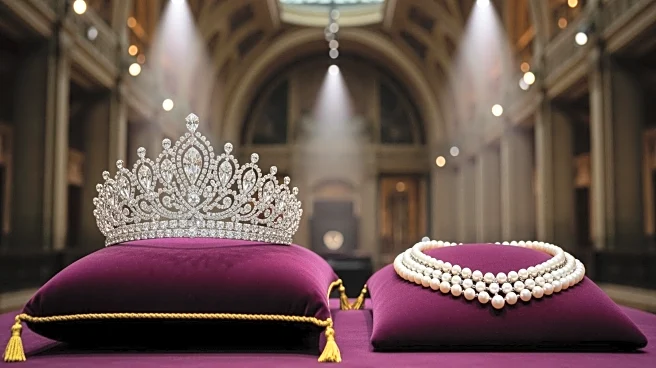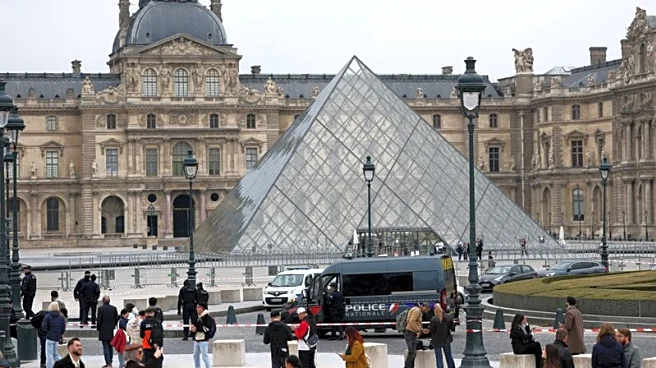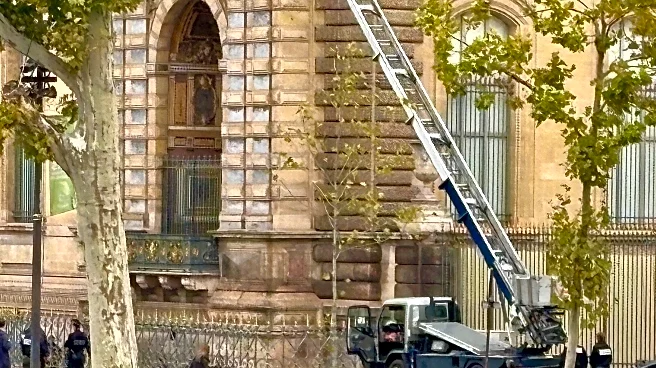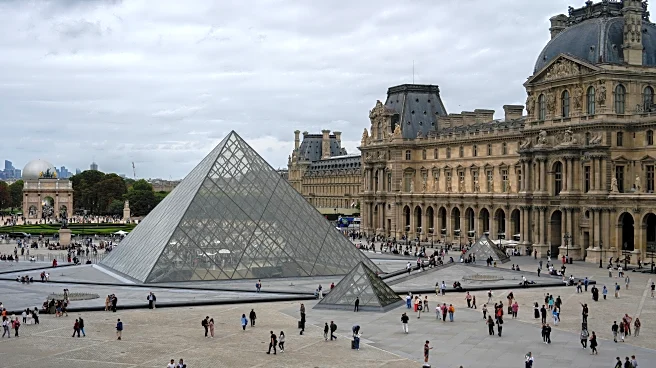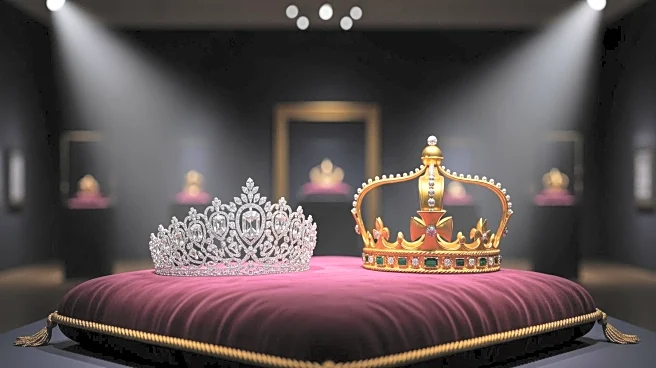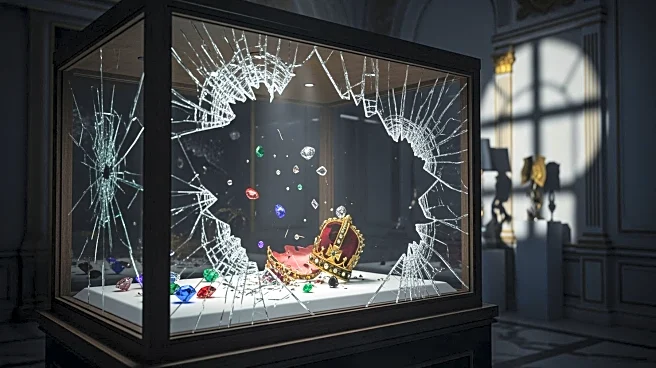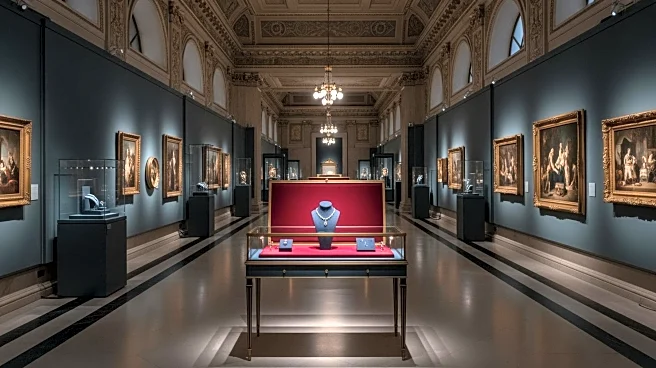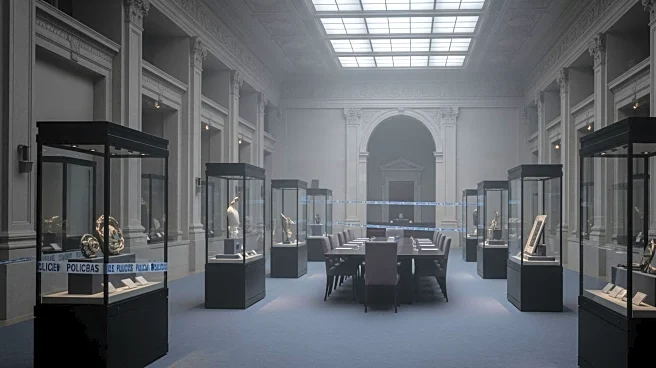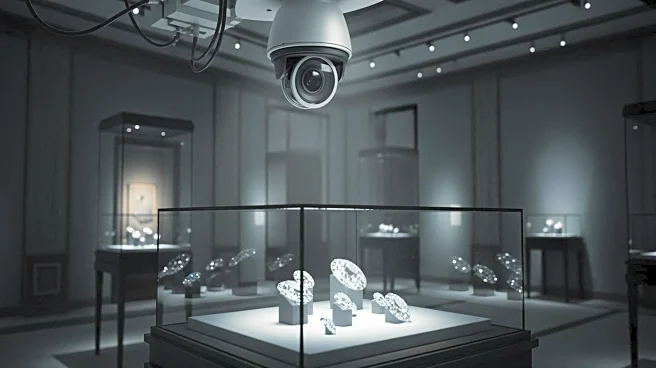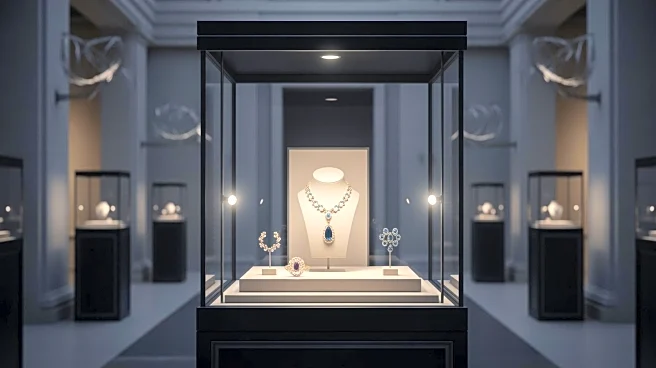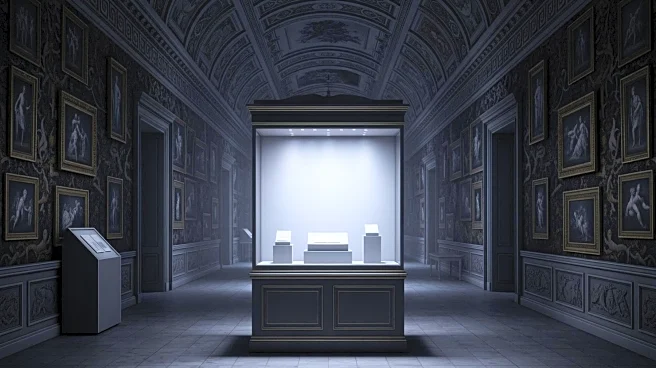What's Happening?
In a daring heist, thieves stole 'priceless' jewelry from the Louvre Museum in Paris during a swift seven-minute operation. The robbery occurred in the Apollo Room, which houses the French Crown Jewels and other significant artifacts. The perpetrators
used an external freight elevator to access the museum and forced open a window with an angle grinder. French Interior Minister Laurent Nuñez reported that three or four individuals were involved in the theft. One piece of jewelry, identified as the crown of Empress Eugénie, was recovered but damaged. The museum was evacuated, and the Louvre remains closed as investigations continue.
Why It's Important?
The theft at the Louvre, the world's most-visited museum, highlights vulnerabilities in security at major cultural institutions. The stolen items, beyond their market value, hold immense historical and cultural significance. This incident could prompt museums worldwide to reassess their security measures. The robbery also underscores the ongoing threat of art and artifact theft, which can have lasting impacts on cultural heritage preservation. The Louvre's closure affects tourism, particularly as American visitors constitute a significant portion of its audience.
What's Next?
French authorities are actively investigating the heist, with confidence expressed by the Interior Minister in recovering the stolen items and apprehending the culprits. The museum's closure is a temporary measure to aid the investigation. The incident may lead to increased security protocols at the Louvre and other museums globally. The cultural community will be watching closely for developments, as the recovery of the stolen artifacts is crucial for maintaining the integrity of historical collections.
Beyond the Headlines
This robbery could have broader implications for the art world, potentially increasing insurance premiums for museums and private collectors. It also raises ethical questions about the security and accessibility of cultural heritage. The incident may spark discussions on balancing public access to art with the need for stringent security measures. Additionally, the theft could influence future policies on artifact protection and international cooperation in recovering stolen cultural property.
